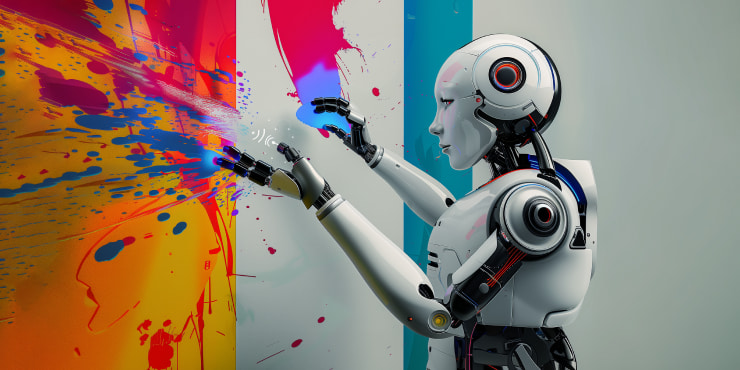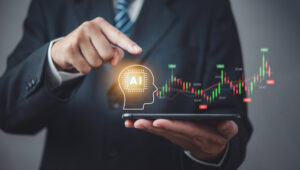The world of graphic design is evolving rapidly, with AI in non-profit graphic design leading the charge toward innovation and efficiency. In the realm of non-profit organizations, the integration of AI has brought about transformative changes that are enhancing visual storytelling and optimizing design processes. This article delves into how AI is reshaping the landscape of non-profit graphic design, offering insights into its benefits, challenges, and future trends.

The Role of AI in Graphic Design
AI is fundamentally altering how graphic design is approached, particularly in the non-profit sector. With AI tools, non-profit organizations can create more impactful designs that resonate with their audiences. By automating repetitive tasks, AI allows designers to focus on creativity and strategic thinking.
Benefits of AI for Non-Profit Design
The benefits of using AI in non-profit graphic design are numerous. AI can quickly generate design templates, suggest color palettes, and even predict design trends, saving time and resources. This allows non-profits to allocate more of their budget towards their core missions.
Examples of AI Tools
Tools like Adobes Firefly are revolutionizing the field. These tools offer features such as automated layout suggestions and image recognition, making design processes more efficient and accessible.
Challenges and Considerations
Despite the advantages, there are challenges associated with incorporating AI into graphic design. Non-profits must consider the ethical implications of AI, such as data privacy and the potential for bias in AI algorithms.
Ensuring Ethical AI Use
Non-profits must strive to use AI responsibly. This includes being transparent about AIs role in design processes and ensuring that AI tools are used in ways that align with their organizational values.
Balancing Human Creativity
While AI can automate many design tasks, the human touch remains irreplaceable. Designers must balance AIs capabilities with personal creativity to produce authentic and resonant designs.
Future Trends in AI and Graphic Design
The future of AI in non-profit graphic design looks promising, with emerging technologies set to further revolutionize the industry. Innovations such as AI-driven personalization and advanced analytics will enable non-profits to create even more targeted and effective designs.
AI-Driven Personalization
AI allows for highly personalized design experiences. By analyzing user data, AI can help non-profits tailor their design strategies to better engage their specific audiences.
Advanced Analytics and Insights
Using AI, non-profits can gain deeper insights into design performance. This data-driven approach can inform future design strategies and enhance overall effectiveness.
Real-World Applications of AI in Non-Profit Design
Non-profits around the world are already leveraging AI to create impactful designs. Organizations are using AI to develop marketing materials, social media graphics, and more, ensuring their messages reach broader audiences.
Case Studies
Several non-profits have successfully integrated AI into their design processes, showcasing the potential of these technologies. By examining these case studies, other organizations can gain valuable insights into best practices and strategies for AI implementation.
Conclusion
As AI in non-profit graphic design continues to evolve, its impact on the industry will only grow. By embracing AI, non-profits can enhance their visual storytelling capabilities, optimize their design processes, and ultimately further their missions.

FAQs
How does AI benefit non-profit graphic design?
AI benefits non-profit graphic design by automating repetitive tasks, providing design suggestions, and allowing designers to focus on creativity and strategy.
What are the ethical considerations of using AI in design?
Ethical considerations include data privacy, potential bias in AI algorithms, and ensuring AI tools align with organizational values.
Can AI replace human designers?
While AI can automate many tasks, human creativity and personal touch remain irreplaceable in the design process.
For more insights on how AI is influencing design, you can read about how AI enhances artistic expression or explore other resources on AIs role in design inputs.







